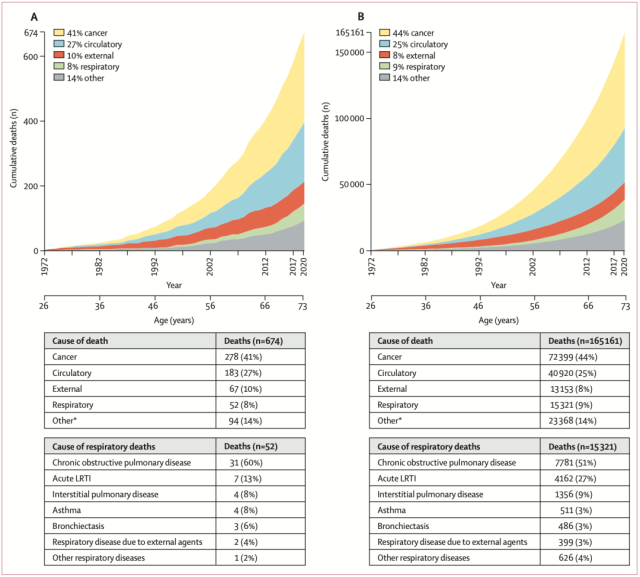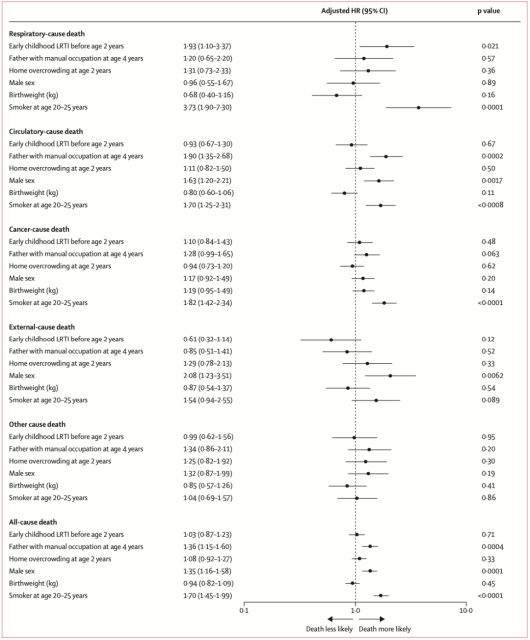LRTI Death: Research spanning 80 years confirms for the first time
- Normal Liver Cells Found to Promote Cancer Metastasis to the Liver
- Nearly 80% Complete Remission: Breakthrough in ADC Anti-Tumor Treatment
- Vaccination Against Common Diseases May Prevent Dementia!
- New Alzheimer’s Disease (AD) Diagnosis and Staging Criteria
- Breakthrough in Alzheimer’s Disease: New Nasal Spray Halts Cognitive Decline by Targeting Toxic Protein
- Can the Tap Water at the Paris Olympics be Drunk Directly?
LRTI Death: Research spanning 80 years confirms for the first time
- Should China be held legally responsible for the US’s $18 trillion COVID losses?
- CT Radiation Exposure Linked to Blood Cancer in Children and Adolescents
- FDA has mandated a top-level black box warning for all marketed CAR-T therapies
- Can people with high blood pressure eat peanuts?
- What is the difference between dopamine and dobutamine?
- How long can the patient live after heart stent surgery?
LRTI Death: Research spanning 80 years confirms for the first time.
“The Lancet”: Research spanning 80 years confirms for the first time that lower respiratory tract infection before the age of 2 doubles the risk of death from respiratory diseases in adulthood
Today, lower respiratory tract infections (LRTIs) remain one of the leading causes of hospitalization and death in children .
We all know that early childhood is a critical period for lung development, and infection at this time will affect the normal development of the lungs, resulting in decreased lung function in adulthood [1].
It is precisely for these reasons that scientists have long speculated that lower respiratory tract infections in early childhood are related to premature death from respiratory diseases in adulthood. However, due to the lack of newborn research cohort support with a large time span, the relationship between the two has always remained at the hypothetical level .
The team of James Peter Allinson of Imperial College London recently published a blockbuster research result [1] in the top medical journal “The Lancet”, which finally filled this gap .
Based on data from the world’s first and longest-running national cohort of newborns (established in 1946), they found that lower respiratory tract infections in early childhood (<2 years) were associated with higher risk factors in adulthood than children without infection. Associated with a 93% increased risk of premature death (between 26 and 73 years) from respiratory disease .
Moreover, the earlier (occurring before 1 year of age), the more frequent (three times and above) or the more severe (requiring hospitalization) of lower respiratory tract infection, the greater the risk of premature death from respiratory diseases in adulthood (increased by 112%, 187%, respectively). % and 335%) .
They also calculated that if the relationship was causal, 20.4% of respiratory-related deaths in adulthood were due to lower respiratory infections in early childhood . Therefore, they believe that the long-term impact of early childhood lung infection should not be underestimated, and children should be vaccinated against pneumonia as much as possible to prevent lung infection.

Screenshot of paper home page
Before formally introducing this study, it is necessary to introduce the cohort used in this study.
In the 1940s, in order to find out why the country’s birth rate had been declining since the mid-nineteenth century, the British government launched the first large national newborn cohort in human history in 1946 [3].
From this cohort of 16,695 newborns born in England, Wales and Scotland between 3 and 9 March 1946, the researchers screened 5362 singleton babies for continued follow-up. In other words, this is a cohort spanning nearly 80 years .
Survival follow-up of participants began in 1972, when all surviving and still in the cohort numbered 3589 participants, all aged 26 years. Allinson’s group defined early childhood as the first two years of life with lower respiratory infections including bronchitis, bronchopneumonia, or pneumonia .
Overall, 913 of 3589 participants (25%) had one or more lower respiratory tract infections in early childhood (596 [65%] had one infection, 162 [18%] had two infections, 155 [17%] had three or more infections). Infection occurred before 1 year of age in 648 (71%), 872 participants (96%) were treated, and 52 participants (6%) required hospitalization.
By the end of 2019, 182 people (5%) had been lost to follow-up due to immigration and 674 people (19%) had died prematurely. Of the 674 participants who died prematurely, 52 (8%) died from respiratory disease and 31 (60%) from chronic obstructive pulmonary disease.

Causes of death for the birth cohort remain consistent with full-year 1946 data
After adjusting for a range of potential confounding factors, including adult smoking, sex, and father’s occupation, Allinson’s team found that developing a lower respiratory tract infection in early childhood was significantly more associated with passing a respiratory illness before age 73, compared with participants without infection.
There was a 93% increase in the risk of premature death (p=0.021) , while there was no significant association with other related deaths such as cancer.

Association between the occurrence of lower respiratory tract infection in early childhood and various causes of death
Likewise, after adjusting for confounding factors, three or more early childhood lower respiratory infections were associated with a 187% increased risk of death from respiratory causes in adulthood compared with participants without infection, and lower respiratory infection before 1 year of age was associated with A 112% increased risk of death from respiratory causes was associated, while a lower respiratory infection requiring hospitalization was associated with a 335% increased risk of respiratory cause death in adulthood .

Association between different infection subgroups and risk of death from respiratory causes in adulthood
Based on the above data, the Allinson team speculated that if there is a causal relationship between early childhood lower respiratory tract infection and premature death from respiratory causes in adulthood, then 20.4% of premature deaths from respiratory diseases in adulthood are directly caused by early childhood lower respiratory tract infection .
This also means that if children can be prevented from developing lower respiratory tract infections before the age of 2, it is possible to reduce their premature mortality in adulthood.
Unfortunately, the burden of lower respiratory tract infections among children remains high globally, especially in low- and middle-income countries.
According to statistics, in 2019, there were more than 40 million cases among children under 5 years of age, and an estimated 672,000 deaths [4].
There is still a long way to go to prevent lower respiratory tract infections in children.
references:
[1].Stocks J, Hislop A, Sonnappa S. Early lung development: lifelong effect on respiratory health and disease. Lancet Respir Med. 2013;1(9):728-742. doi:10.1016/S2213-2600(13) 70118-8
[2].Allinson JP, Chaturvedi N, Wong A, et al. Early childhood lower respiratory tract infection and premature adult death from respiratory disease in Great Britain: a national birth cohort study. Lancet. 2023. doi:10.1016/S0140-6736 (23)00131-9
[3].Wadsworth M, Kuh D, Richards M, Hardy R. Cohort Profile: The 1946 National Birth Cohort (MRC National Survey of Health and Development). Int J Epidemiol. 2006;35(1):49-54. doi :10.1093/ije/dyi201
[4].GBD 2019 LRI Collaborators. Age-sex differences in the global burden of lower respiratory infections and risk factors, 1990-2019: results from the Global Burden of Disease Study 2019. Lancet Infect Dis. 2022;22(11): 1626-1647. doi:10.1016/S1473-3099(22)00510-2
LRTI Death: Research spanning 80 years confirms for the first time
(source:internet, reference only)
Disclaimer of medicaltrend.org
Important Note: The information provided is for informational purposes only and should not be considered as medical advice.



